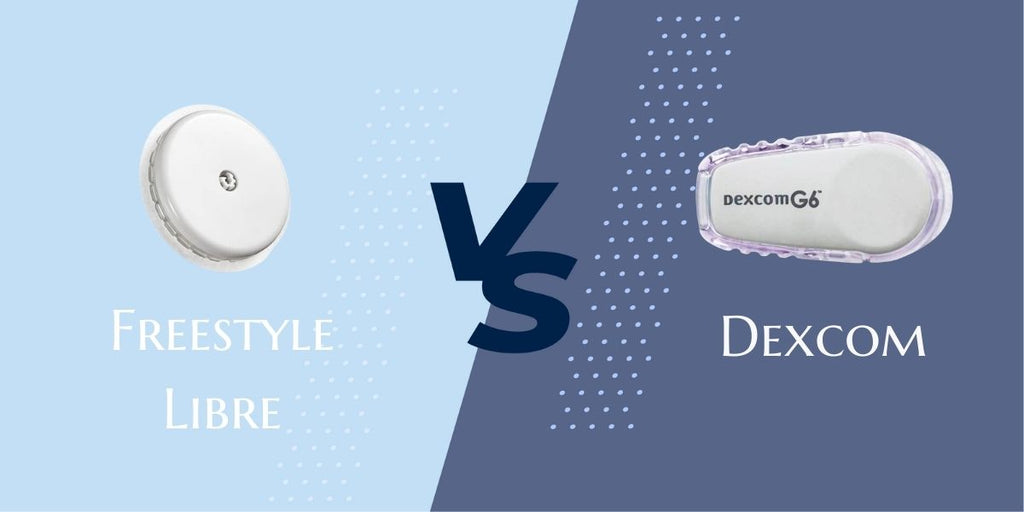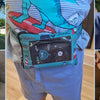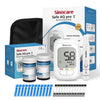Dexcom G6 vs. Freestyle Libre 2: A Comprehensive Comparison
-
Published on
Last updated on

Checking your blood sugar, or glucose, on a daily basis is an important element of controlling type 1 and 2 diabetes for many people.
Are you trying to decide between the Dexcom G6 and Freestyle Libre 2 Continuous Glucose Monitors (CGMs)? These two CGM systems are popular choices for managing diabetes, each offering unique features. In this comprehensive comparison, we’ll break down the key differences and benefits to help you choose the right CGM for your needs.
Freestyle Libre 2 Overview
Functionality:
- Sensor Wear: 14 days
- Scanning: Requires manual scanning for readings
- Alerts: Optional alarms for high and low glucose levels
- Calibration: No calibration needed
- Data Access: Compatible with smartphones and dedicated readers
Cost:
- Typically more affordable than Dexcom G6, with prices varying based on insurance coverage and region.
Accuracy:
- MARD (Mean Absolute Relative Difference): Approximately 9.2%
Advantages:
- Longer Sensor Wear: 14 days of continuous monitoring.
- Cost-Effective: Generally lower cost.
- User-Friendly: No calibration required.
Considerations:
- Manual Scanning Needed: Requires manual scanning to view glucose levels.
- Limited Real-Time Data: Real-time data only available through scanning.
Dexcom G6 Overview
Functionality:
- Sensor Wear: 10 days
- Scanning: No manual scanning required; continuous data transmission
- Alerts: Customizable alerts for high and low glucose levels
- Calibration: No calibration needed
- Data Access: Compatible with smartphones and dedicated receivers
Cost:
- Generally higher than Freestyle Libre 2, but varies based on insurance coverage and region.
Accuracy:
- MARD: Approximately 9.0%
Advantages:
- Continuous Real-Time Monitoring: No need for manual scanning.
- Customizable Alerts: Highly customizable alerts for glucose levels.
- Integration: Compatible with various diabetes management apps and devices.
Considerations:
- Higher Cost: More expensive compared to Freestyle Libre 2.
- Shorter Sensor Wear: 10-day sensor wear period.
Which CGM System is Right for You?
Choosing between the Freestyle Libre 2 and Dexcom G6 depends on your personal needs and preferences:
- Freestyle Libre 2 is ideal if you prefer a longer sensor wear period and a lower cost. It is user-friendly and does not require calibration but does need manual scanning to check glucose levels.
- Dexcom G6 is perfect if you value continuous real-time data without manual scanning. It offers customizable alerts and is integrated with various apps and devices, though it has a higher cost and shorter sensor wear period.
Key Factors to Consider
- Cost: Consider your budget and insurance coverage.
- Sensor Wear Period: Decide how often you’re comfortable changing sensors.
- Data Access: Determine if you prefer manual scanning or continuous real-time data.
- Alerts and Customization: Evaluate the importance of customizable alerts for your diabetes management.
Conclusion
Both the Freestyle Libre 2 and Dexcom G6 are excellent CGM systems that can help you manage your diabetes effectively. The best choice depends on your lifestyle, budget, and how you prefer to monitor your glucose levels.
For personalized advice, consult with a healthcare professional who can help you decide which CGM system suits your individual needs.





